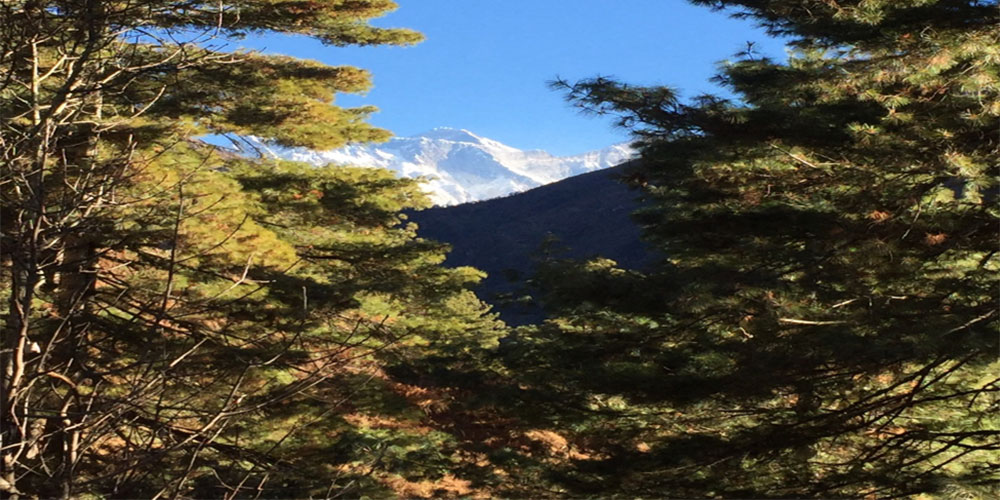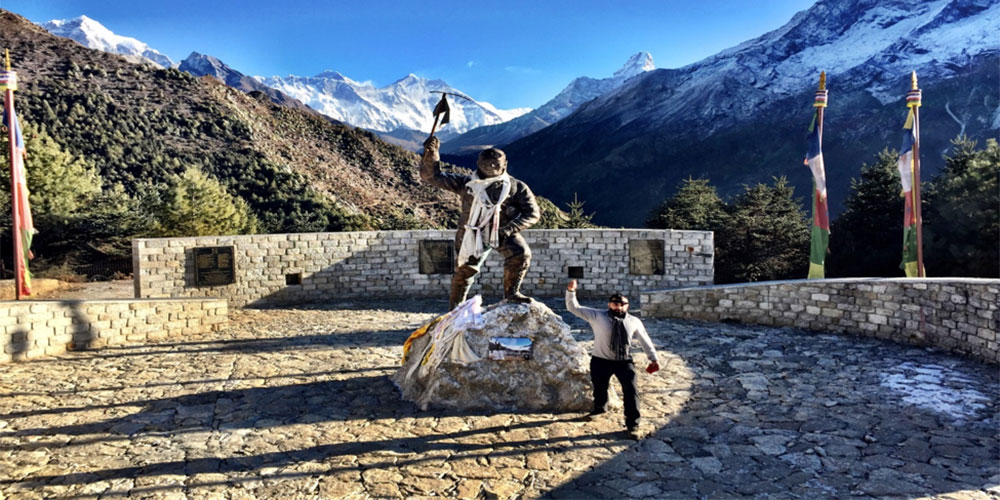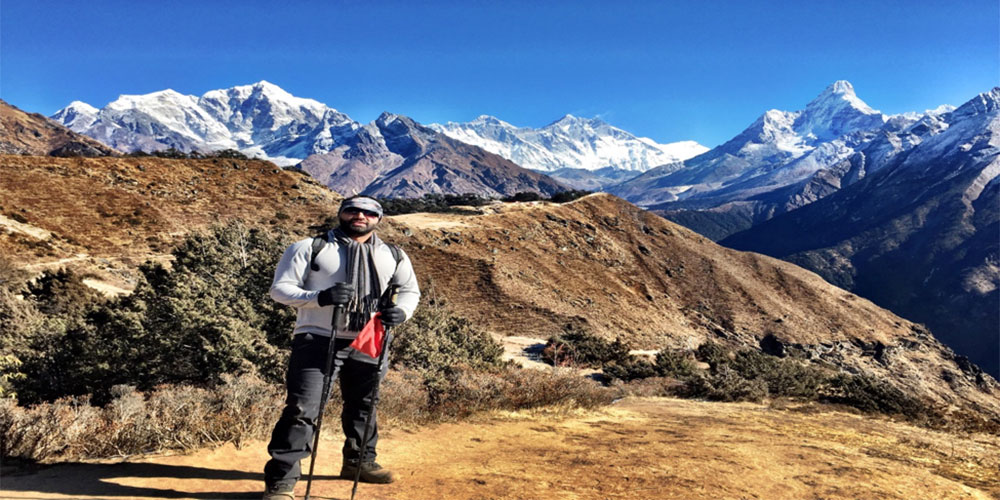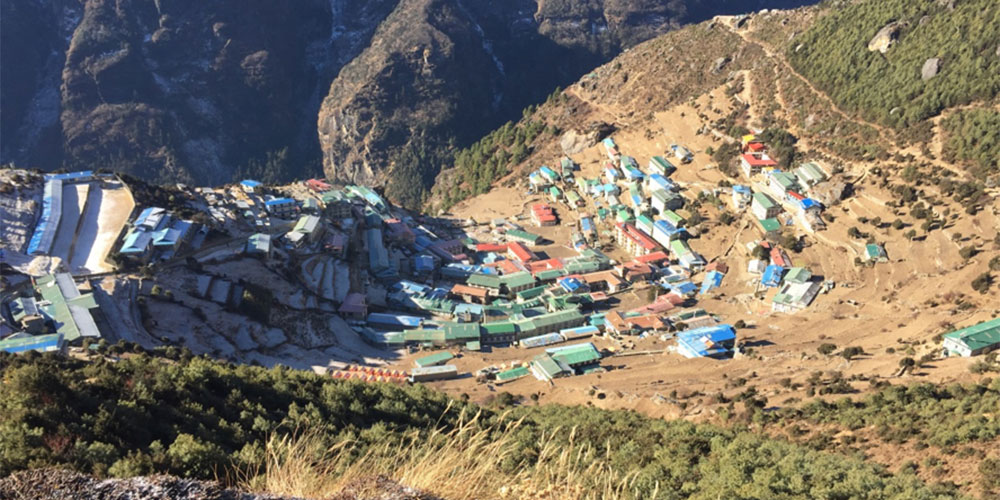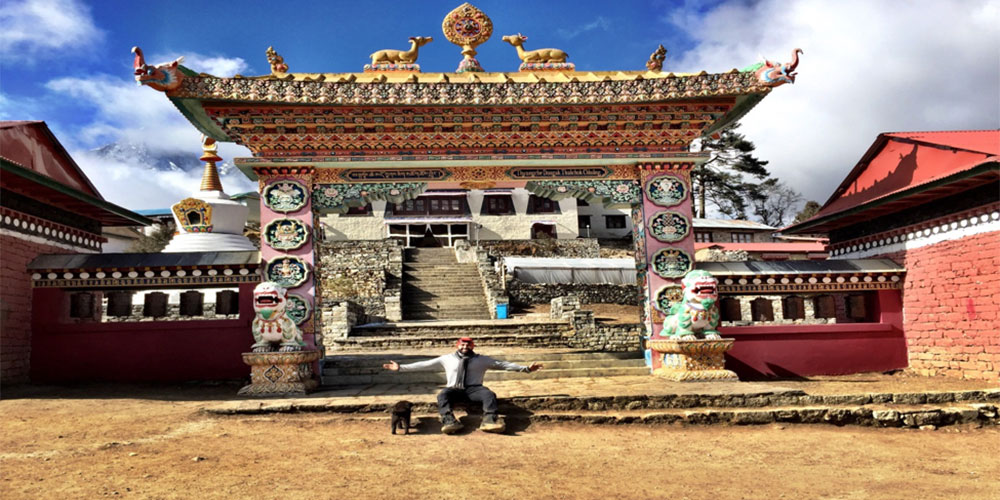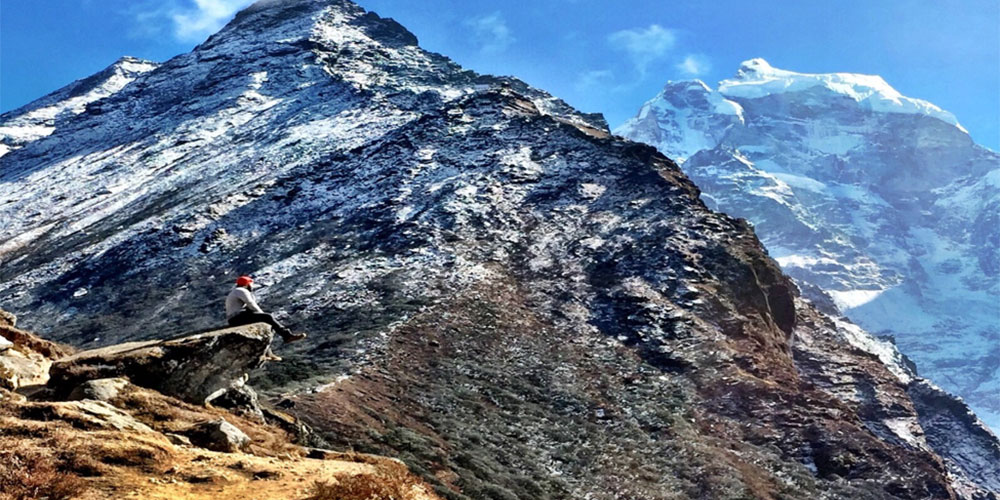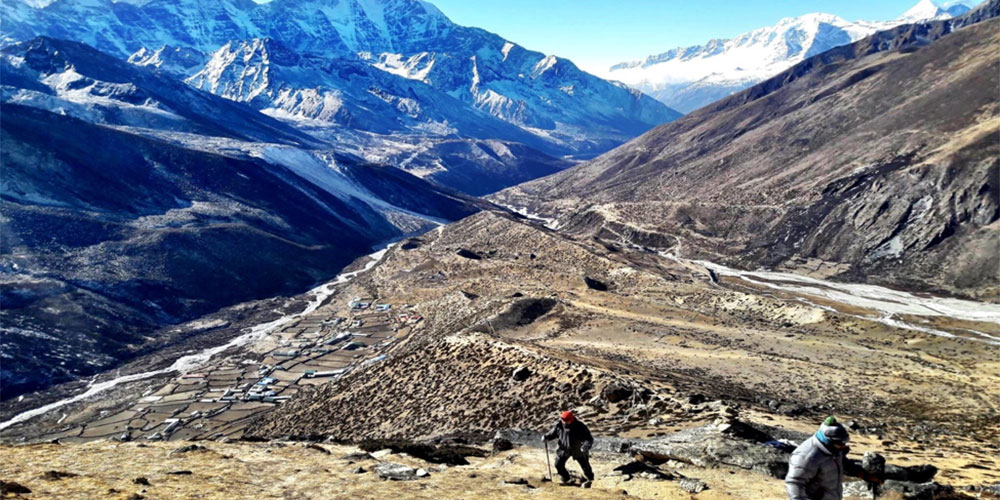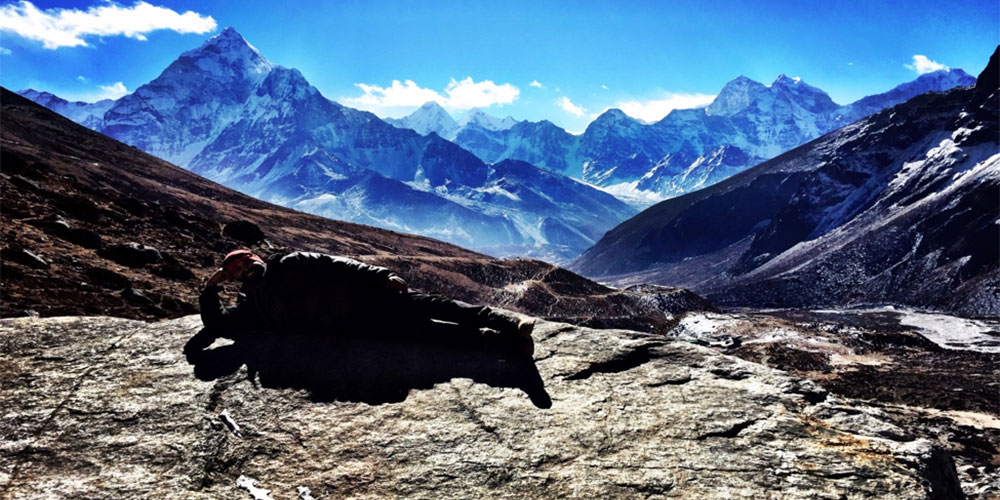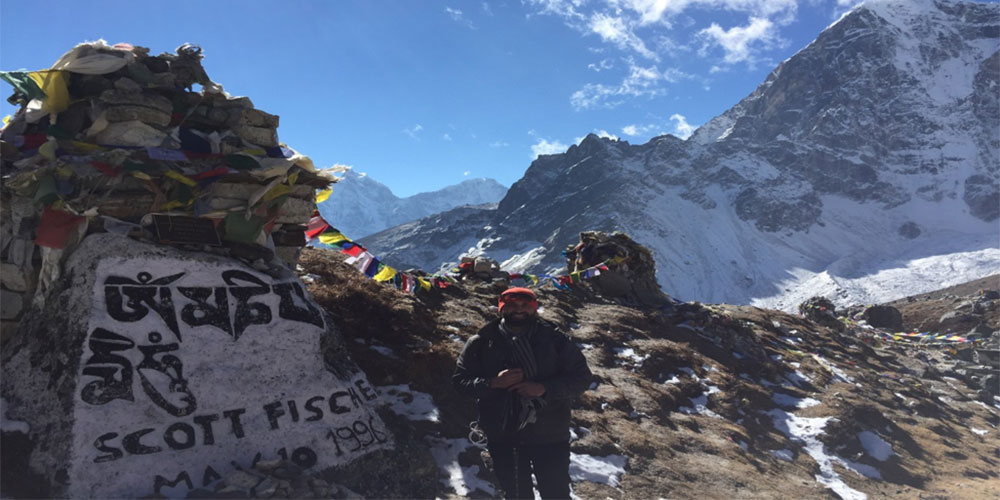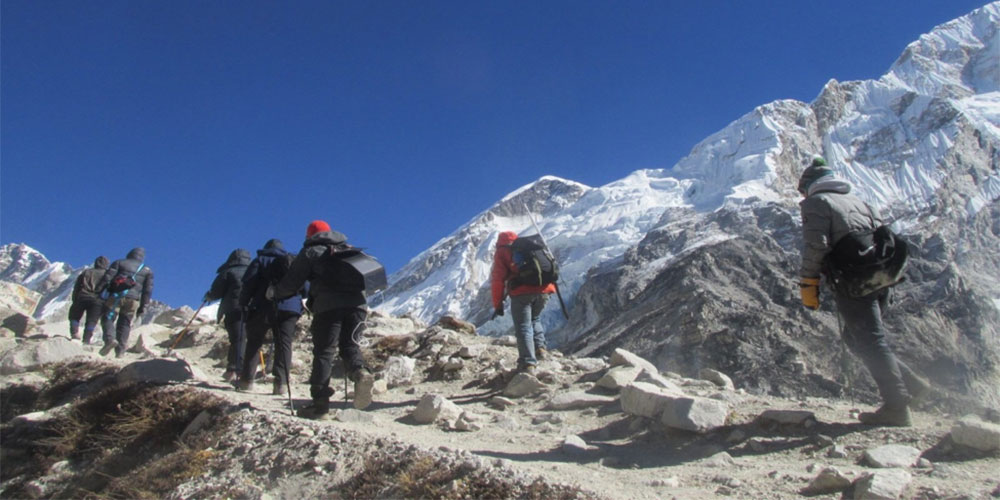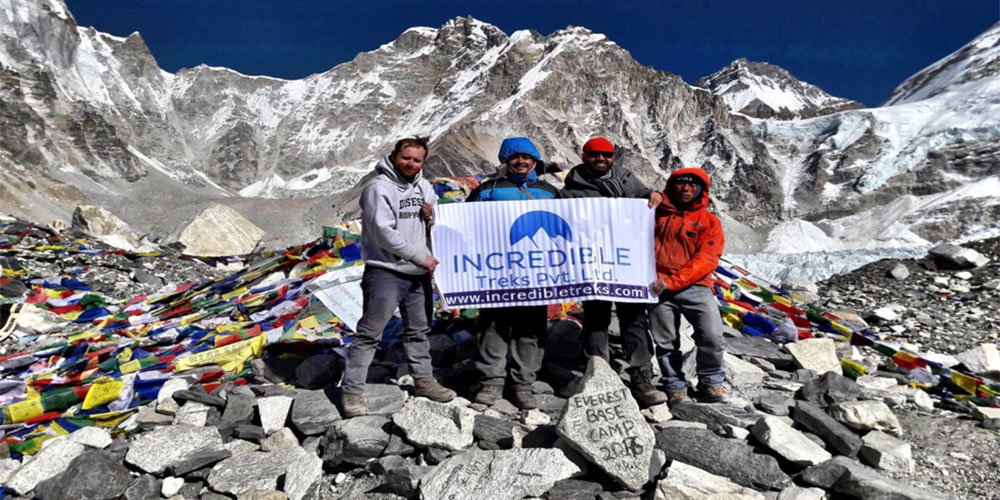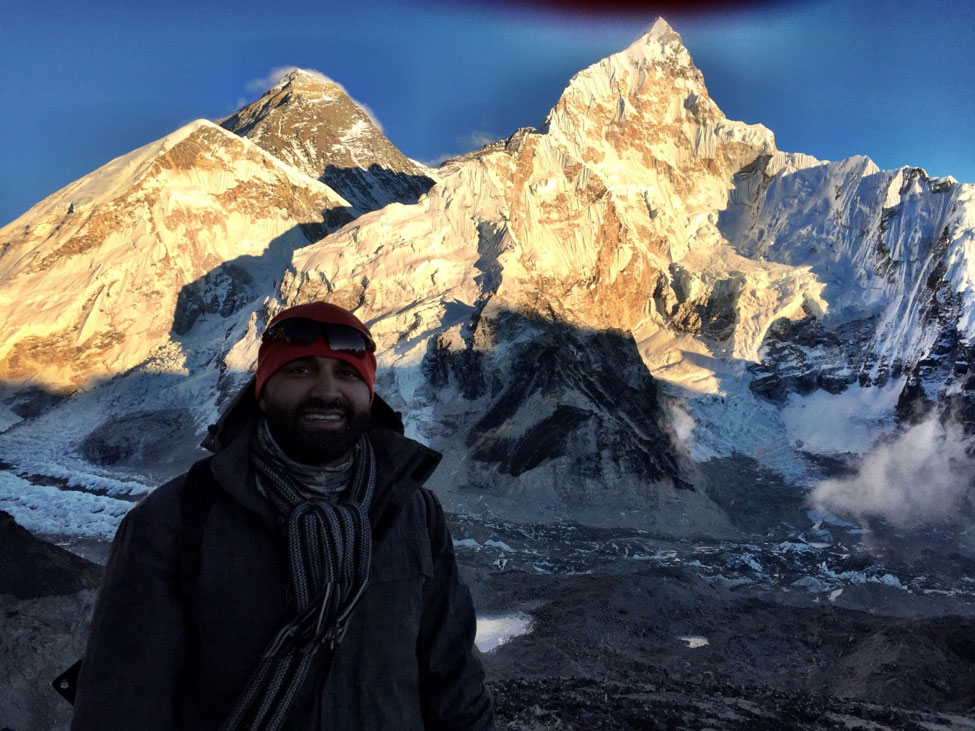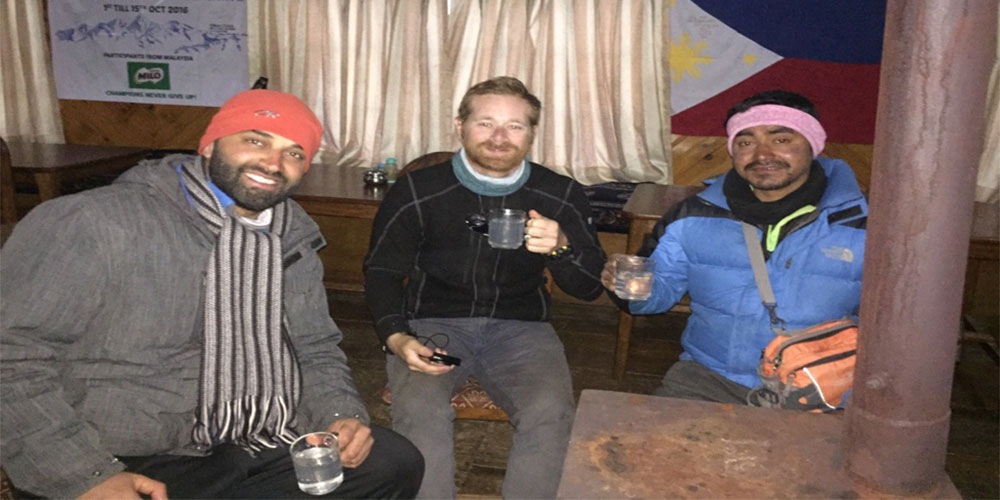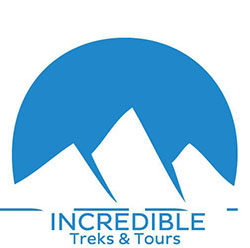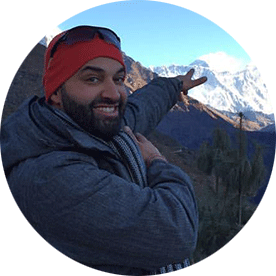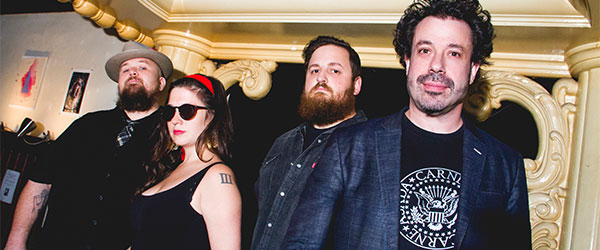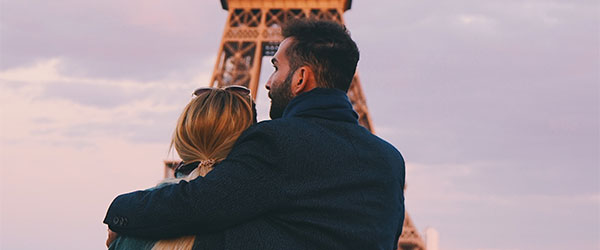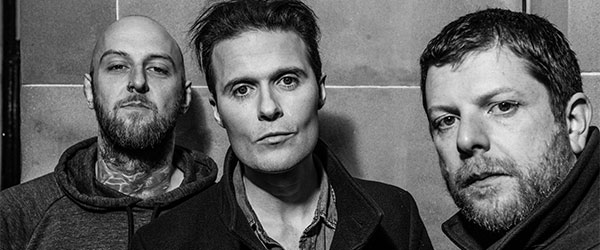On their head-spinning new album, The Claudettes summon vaudeville blues, ’60s soul and Cramps- ...
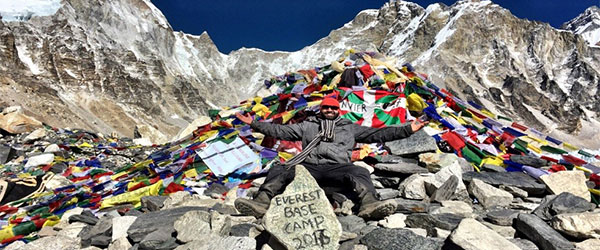
My obsession with the mountains, and Mount Everest specifically, started during my first trip to Nepal on December 26th, 2016. Nepal was a vacation that I hadn’t planned. It just sort of happened by chance. I was having issues acquiring my visas to visit my father in India, since my birth just happened to be in Pakistan. I was reconnecting with my father after not seeing or talking to him for 14 years. We decided that it was finally time we play grown-ups and sort this situation out.
Now, even though my mother and father are both Indian, the Indian embassy tends to give citizens born in Pakistan the hardest time to gain access to their country; even if they hold an American passport (like myself). After talking it through with my father, and letting him know that I wouldn’t be able to get my visas before the date we planned to meet, we then decided that Nepal would be the appropriate and easiest place for us to meet. It was a place where they weren’t going to heckle me about visas. It was also a convenient trip for my father, since he lives in Mumbai.
After both of our arrivals, we totally didn’t consider the fact that Nepal was still recovering from the Earthquake that devastated its country in 2015. They were still in the process of working back to their normal lives.
Even though I got to reconnect with my father, three days later he fell severely ill and needed to go back to India to take care of his health. He left on January 1st, and here I was stuck in Nepal until January 20th thinking, “Wow! What am I going to do in this country for another 20 days?” I read about a popular hike that lots of tourists take when they come to Nepal, the Annapurna Base Camp trek. It was a 10-day hike and I decided to go for it. It was the best decision I ever made!
As I was leaving Nepal, I looked back and said to myself, “Unbelievable, what a successful trip!” Not only did I get to hang out with my pops after 14 years, but I got to see some of the most beautiful mountain ranges in the Himalayas. I proceeded to set a small goal for myself as I was leaving: to come back next year and do the Everest Base Camp (EBC) trek. This is my story.
— — —
January 2, 2017 – Arrival to Kathmandu
January 3, 2017 – Equipment check and John’s arrival
January 4, 2017 – Flight to Lukla and hike to Phakding (8727 feet)
January 5, 2017 – Phakding to Namche Bazaar (11,200 feet)
January 6, 2017 – Acclimatization Day
January 7, 2017 – Namche Bazaar to Pangboche (12,700 feet)
January 8, 2017 – Pangboche to Dingboche (14,304 feet)
January 9, 2017 – Acclimatization day to Nakarsang Hill (16,500 feet)
January 10, 2017 – Dingboche to Lobuche (16,400 feet)
January 15, 2017 – Flight back to Kathmandu
— — —
January 2, 2017 – Arrival to Kathmandu
Usually when I set a goal for myself, I tend to follow through with it. I planned my journey with the most incredible company that arranges most of the logistics for these kinds of adventures. Incredible Treks and Tours based in Kathmandu. This business is ran by two brothers, Nabin Basnet and Krishna Basnet. Krishna, who also happened to be our guide for this trek, was one of the most professional, caring and knowledgeable guides a client can ask for. He simply took care of all our necessities during this trek. (If you plan a similar excursion make sure you look these guys up. They will go above and beyond to make your dreams come true.)
To get back on track, I arrived in Nepal around 10:30 p.m. on January 2nd. It then took me 30 minutes to clear acquiring my visas (15 days – $20, 30 days – $40) and finally get through customs. As soon as I exited the airport, I was swarmed by locals to offer me a ride to my destination. At 11:00 p.m. no less! I remember thinking, “Does anyone sleep around here?” After going through the crowd, I was able to find Krishna who was holding the IT&T sign. He arranged transportation for me to my hotel, Hotel Happy Home, in Kathmandu. I checked in and fell right to sleep after my long flight. (Side note: the transportation and hotel is covered in the cost when you book your trip, a huge bonus!) | BACK TO TOP
January 3, 2017 – Equipment check and John’s arrival
Today’s itinerary was blocked off to take care of all logistical aspects of this journey; such as payments, equipment/gear check and any last minute purchases. Krishna made it known that the conditions in Everest get really bad during the winter. My friend John, who would be joining me on this trip, was set to arrive around noon, as well. John and I knew each other from the military. We served in Afghanistan together.
When I woke up, breakfast was complimentary at the hotel. They had a set breakfast: omelet, hash potatoes, sausage and your choice of beverage. After, I walked around a sector of Kathmandu called Thamel. Here I found anything that I needed, and I mean anything: mountaineering equipment, food, bars, massages and various illegal activities (if you indulge, just don’t get caught or you’ll never leave Nepal)!
By the time I returned back from my excursion, a car pulled up near our hotel and it was John. He was not feeling good, as he became the victim of food poisoning during his New Year’s celebration in Thailand. Once I got him situated in his room, we both took off to meet with Nabin and Krishna. We then took care of the final payments, he briefed us on the entire route, checked our gear and made us write a list of anything else we need to buy. We were both missing one-or-two items each.
We then went back to Thamel, picked up what we needed and ate dinner at a popular pizza place that attracts lots of tourists: Fire and Ice Pizza. The pizza was incredible. As soon as we finished our meal, we went back to our hotel and went to sleep. We had an early wake up in the morning to catch our flight to the village of Lukla (altitude: 9,383 feet). | BACK TO TOP
January 4, 2017 – Flight to Lukla and hike to Phakding (8727 feet)
Wake up was at 5:00 a.m., so I immediately got up and took the longest shower I could knowing this would probably be my last shower for two weeks. I should say that there are options for you to take a shower on the trek, however one, it’s not free, and two, you’ll be risking your health as all showers are outdoors and it’s extremely cold. John and I both decided that we wouldn’t be taking a shower while we are on this trek. It wasn’t like I was going to meet the love of my life on this excursion! Well actually, Everest became the love of my life, so I guess I did in a way.
Our flight for Lukla was at 7:00 a.m., and Krishna arrived around 6:15 a.m. to take us to the airport. Once we checked in and got our boarding pass, we were waiting in the waiting area for the fog and wind to clear. Lukla Airport, also known as Tenzing–Hillary Airport, is actually the world’s most dangerous airport. Flight conditions have to be good in order for the pilots to land on the landing strip, which begins at the edge of a cliff! Low visibility can, and has caused, planes to crash on the mountain.
In 2008, a Yeti Airlines’ plane crashed killing all 18 on board. It happened again in 2010 and third time in 2012. This airport is no joke! The 30-minute ride, filled with heavy turbulence, feels like one is riding on a roller coaster. Our plane was constantly flung up, down and sideways. I thought to myself in that moment, “I’m never going to see Everest, because I’m going to die today!” I was wrong, thank God. We landed in Lukla safe and sound.
Once our packs were sorted, Krishna picked out a porter that would carry most of our logistical supplies to Base Camp. Once he got the exact location where we were going, he took off like Usain Bolt to make sure everything was in order upon our arrival to the next village. He was carrying anywhere between 80-100 lbs. While John and I were struggling with our 15 lb packs at our 9,383 feet of altitude, our porter was running sprints with a pack six-times heavier than ours!
Upon our arrival at Lukla, we stopped at a tea house for breakfast. Again, we had eggs, hash potatoes, toast, sausage and your choice of a beverage. After breakfast, we began our trek, which started with an hour-long descent to the village of Chablung. Once we passed that village, the route sort of curved around the mountains and briefly descended to the village of Ghat. From there, the route descended even further, about another hour’s worth of walking to the village of Phakding (altitude: 8,727 feet). In all, it took us three and a half hours to make the trek from Lukla to Phakding.
We stayed in a tea house called the Biergarten where we would spend the night. Krishna recommend Daal Bhat for lunch, a local Nepalese meal consisting of a bowl of Lentil soup, rice and potatoes, which contains all the nutrients needed to make a successful hike to Base Camp. The great thing about Dal Bhat is that you can have an unlimited amount of it, because that’s what the hotel staff eats too and they have a ton.
If you order from the menu, you’ll only get one portion, but that portion is decently sized and is enough to fill you up. During our stay in this tea house, we got to meet individuals from Australia, the United States (Minnesota), Kuwait and China. We all chit chatted, played Spades (the card game) and got to know about each other. We would continually run into the same crowd as we were all trying to reach Base Camp simultaneously. Finally, we all retreated to our rooms by 8:00 p.m., as it’s recommended to get a good nights’ rest in a precautionary measure to prevent altitude sickness. | BACK TO TOP
January 5, 2017 – Phakding to Namche Bazaar (11,200 feet)
On this day, wake up was at 7:00 a.m., breakfast was 7:30 a.m. and we were back on the trail by 8:00 a.m. The journey started by crossing various bridges over several rivers as we traveled along a trail that leads to the river bank. From there, the trail leads to the village of Benkar, then onto the next village of Dudh Kosi, before ascending to the village of Chumoa. The routes to the first three villages are a little steep, but nothing too challenging, and the scenery is absolutely wonderful. After we passed through Chumoa, there was a short climb through the forest to the village of Monjo.
Once past this village, we then stopped at the entrance of Sagarmatha National Park where we had to pay a small fee of 3,000 rupees (28 USD), while providing our hiking permits. We then descended down towards Dudh Kosi and onward to the village of Jorsale, our last village (I promise) before reaching our final destination for the night Namche Bazaar. Passing through Jorsale, we found ourselves back along the river, where the route jetted upward towards a high suspension bridge over the river. This one was not for the lighthearted.
Once we crossed this bridge, it is a tough two-hour climb to Namche Bazaar (11,220 feet). While making this ascend there is a small rest stop along the trail known as Everest View Point. This is where we got our first view of Mount Everest. The highest point on this world was right in front of me, and I was enchanted by its beauty. Once we caught our breath, we continued hiking up towards Namche Bazaar, taking as many pictures as possible to capture our beautiful experience in the Himalayas.
After a tough, tough and I mean tough two-hour climb, we finally made it to Namche Bazaar. The total time travelled was five-and-a-half hours. It all depends on how fast you decide to push it, considering the altitude. While we made it in that time, others took longer. Namche Bazaar is generally the place where most people start to feel symptoms of altitude sickness. It’s very important that you don’t rush your hike at this altitude. The slower you go, the better your body will adapt to the altitude. The locals tended to move at the speed that I would move at sea level, but again they’re used to it and our bodies weren’t.
I could simply feel being out of breath when bending over to tie my shoe laces. Definitely listen to what your guide advises you to do and you’ll be fine. Namche Bazaar offers all a climber and hiker needs. It’s like a mini Thamel, but just higher in altitude. During peak climbing season tourists flood this tiny village and hotels are usually over booked. Some tourist end up sleeping in the dining facilities, while others set up a tent outside. (Pro tip: going in January when it is less crowded is ideal if you’re just hiking to Base Camp.)
Climbers looking to summit Everest usually have a small window in May to summit (the jet stream usually shifts around there making it more stable for climbers to summit). It’s a short window, but climbers start pouring in around March/April to let their bodies adjust to the thin air. We again checked into a tea house, this time I ordered a cheese pizza (it was really, really good considering where we were). We ran into more tourists here and got to know them. For the rest of the day, John and I walked around to check out the village and see what kind of cool stuff it had to offer. I had cheese pizza for dinner again and then retreated to my room by 8:00 p.m. Wake up was once again for 7:00 a.m. | BACK TO TOP
January 6, 2017 – Acclimatization Day
It’s very important to acclimatize your body for the thin air. The next day we were going to the village of Pangboche which is 12,700 feet high. Krishna, recommended we push to about 12,800 where there is another view point of Mount Everest. He wanted to spend about 30-40 minutes up there and return back to Namche Bazaar to sleep. As we made our ascend, we stopped at the local museum about the history of Everest. We also got to see a giant statue of Tenzing Norgay, who’s the first person, along with Sir Edmund Hilary, to climb Mount Everest.
As we ascended higher we stopped at Everest View Point. From the right in the picture below, it’s Ama Dablam (22,349 feet), Center Nuptse (25,791 feet) and finally Everest (29,035 feet) poking out in the center of the pic.
Once we acclimatize, we descended back to Namche Bazaar, rested and retreated back to bed by 8:00 p.m. with a (you guessed it) 7:00 a.m. wake up on tomorrow’s schedule. | BACK TO TOP
January 7, 2017 – Namche Bazaar to Pangboche (12,700 feet)
We made our usual start time of 8:00 a.m. leaving the village of Namche Bazaar, taking off for a relatively flat terrain that varies slightly between incline and decline. We traveled this trail for about an hour and a half where we got plenty of opportunity to take more pics of Everest. We then arrived to the village of Khunde and the Khumjung. Then the trail descends for 500 meters, bringing us back down by the river of Dudh Kose, where we stopped to admire the beauty and to have a cup of tea to gain energy for a challenging 400-meter ascend to the village of Tengboche.
Upon our arrival to Tengboche, we ate lunch and prayed at the Buddhist monastery there. This is the monastery that all climbers stop to pray with the Llama at for hopes of a successful summit. After our visit from inside the temple, we continued our journey to Pangboche, all the while continuing to be mesmerized by the beauty of the Himalayas. | BACK TO TOP
January 8, 2017 – Pangboche to Dingboche (14,304 feet)
This is where the altitude really kicks in. Krishna, reminded us that the slower we go the better our body will be able to adjust to the altitude. Hydration was also the key. I made sure that I filled up both my bottles, purifying them well before we took off for the hike. Initially, we started ascending to the village of Periche. Once we arrived there, we traveled another 30 minutes to the village of Dingboche, which is located in a valley surrounded by more beautiful mountains. Today’s trek was only three hours, due to the fact that we traveled for over seven hours the day before, shaving two hours off today’s route. We were really glad that we did, because the trail became quite strenuous, along with our breathing. We would spend the night here. | BACK TO TOP
January 9, 2017 – Acclimatization day to Nakarsang Hill (16,500 feet)
Krishna let us know that today’s acclimatization day was definitely the most important one we’d have. He said that if we could make today’s climb, and adjusted well to the altitude, we’d have no problems at EBC (17,600 feet) and Kalapattar (18,200 feet). It was a two-hour ascend from the village of Dingboche. With the steepness of the route and the thin air, it was by far the most painful day of the trek.
To the left (first picture above) is the village of Dingboche. Then there is John and I making our attempt to conquer this “hill” known as Nakarsang Hill. I assure you getting to the summit was completely worth it. We got a great shot of the fifth highest mountain of the world, Makalu (second picture above). We spent about 30 minutes on the summit to get adjusted to the thin air that awaited us further on the trek. | BACK TO TOP
January 10, 2017 – Dingboche to Lobuche (16,400 feet)
Once we left Dingboche, we made a slight ascend to the village of Phulang Kala and then to the village of Dulga. We stopped at a tea house here to drink tea so we could gain energy for the climb ahead of us. Once we finished drinking our tea, we started a steep, hour-long ascent towards the memorials of the fallen climbers. This is where you’ll see stupas in memory of many climbers, such as Rob Hall (Adventure Consultants) and Scott Fisher (Mountain Madness). These experienced climbers, who summited Everest multiple times, lost their lives tragically on May 10th, 1996 along with several other climbers. (Note: If you’re interested in reading more about this, I highly recommend reading Jon Krakauer’s “Into the Thin Air” or Anatoli Boukreev’s “The climb”.)
Once we passed the memorial, we traveled along a relatively flat trail for about an hour and a half, arriving at the village of Lobuche. The total trek took five hours, but with the amount of incline we traveled, combined with the thin air, we were pretty exhausted. Lobuche was not much to look at. Everything was pretty much frozen over, including the toilets! We had lunch, then pushed a little higher to get acclimated, before eventually returning back to Lobuche to bed down for the night. | BACK TO TOP
January 11, 2017 – Hike to Gorakshep (17,000 feet), Everest Base Camp (17,600 feet) and Kalapattar (18,200 feet)
Today was the definitely the most interesting day of the trek. Krishna, John and I decided for a 5:00 a.m. wake up to start pushing towards Gorakshep by 6:00 a.m. Well, that definitely didn’t exactly work out as we had planned. We were up and about by 5:00 a.m., on track for breakfast at 5:30 a.m. and as we were getting ready to leave, a teenager from a Korean family, who happened to share the tea house with us, collapsed on the floor. His skin turned purple and he was barely conscious, breathing faintly.
At first we all assumed it must have been high altitude cerebral edema (HACE), but John, who’s an EMT, and myself (I’ve had some medical training too) came to the conclusion that this could be hypothermia. The first thing John and I did, with the help of the hotel staff and Krishna, was take him outside and stuffed him in a double sleeping bag. He could breathe better outside, as inside we were burning yak feces to keep ourselves warm (there’s no wood up that high in elevation). We also stuffed the sleeping bag with hot water bottles, targeting his extremities. Once we felt like his skin was returning to normal, and he was able to communicate better, we thought him how to control his breathing, allowing him to control his heart rate.
After about an hour of observing his symptoms were slowing going away, it seemed like everything was returning back to normal. Krishna highly recommended to the South Korean guide that he should no longer go up and be taken down so he can fully recover. Fully recovering at such high altitude, due to the lack of oxygen, can be extremely tough. Before leaving, I gave the kid my second-to-last snicker bar (which, I will not lie, regretted), then John, Krishna and I took off for Gorakshep two-hours later than planned.
Getting to Gorakshep was not difficult. The route contours around the Khumbu glaciers, going up and down the entire way. It was more uncomfortable than anything else. The rocks and ice on the route can give you a hard time hiking. It’s best to go slow and with caution. We arrived at Gorakshep around 10:45 a.m., and made an assessment to make up time by not eating lunch, pushing closer towards EBC. Krishna warned that it’ll take four hours to return back to Gorakshep — two hours each way. The hike to EBC was pretty strenuous, as there are no clear routes on the trail. They are covered with ice and rock, so we moved slowly and cautiously. Finally, we arrived at EBC, calling for a mini celebration!
Although I didn’t have the wind to celebrate, I just remember having a big smile on my face, followed by doing 20 push-ups to really tire myself out. Of course John, not to be shadowed by my 20 push-up strength, knocks out 50. We stayed at EBC for about an hour, just soaking in the sun and enjoy our victory of making it. However, I knew there was one more challenge left and that was to get to the summit of Kalapattar.
It’s recommended that if you do one, you should do the other the next day. Meaning if you did EBC first, do Kalapattar the next day. So, Krishna gave us the option of waking up at 4:00 a.m. to see the sunrise from Kalapattar, or just completely not go there if we wanted to. He gave us two hours to think about it, which was enough for us to get back to the village of Gorakshep. Once we arrived he asked what we decided to do. I responded wanting to make the climb today in order to see the sunset. He told me that I was crazy and tired, and that I should decide after I ate a meal. I ordered Daal Bhat for the power to tower Kalapattar.
Then, Krishna again asked me what we wanted to do. I told him that we’re climbing this today, because there was no way I was going to be waking up at 4:00 a.m. to climb a rock at -20° Fahrenheit, freezing my butt off, all just to see a sunrise. As much as he tried to convince me that I don’t have the energy, I didn’t let up. He finally agreed, and we made the TOUGH two-hour ascent towards the summit of Kalapattar, where I got this otherworldly shot of Mount Everest (above). Once we reached the top, we descended back to the village of Gorakshep and went to sleep for a 7:00 a.m. wake up to begin our descent back towards civilization. | BACK TO TOP
The next three days were spent descending back down the route we came on. I can assure you with all the climbing that we did, it was a lot easier on the way down, especially because we were going towards sea level, meaning more oxygen! Once we arrived to Lukla, we celebrated with vodka and kind of hot water. Yes, kind of hot water! It was still cold, but it kept us warm. | BACK TO TOP
January 15, 2017 – Flight back to Kathmandu
The flight back to Kathmandu was about the same. I was again convinced that this day would be my last day on planet earth. Again, I was proven wrong. Thank God! Needless to say, the first thing I did was take a hot shower, enjoying every single second of it. Once John and I took care of all personal hygiene business, we went around town buying souvenirs for friends and family. We enjoyed a nice dinner at the Kathmandu Steak House, having a nice long chat about our trek to Everest throughout. The next day Krishna invited us to his home, where we met his family, had more celebratory drinks and ate an amazing dinner! | BACK TO TOP
Conclusion
Finally, before I flew back home the next day, I set a goal for myself! My next goal is to link up with Krishna and summit Islands Peak (20,035 feet), and God willing, with the proper training and sponsors, summit Mount Everest no later than 2026. Thank you all for taking the time to read my journey to EBC. | BACK TO TOP
— — —
For more on doing this yourself visit Incredible Treks And Tours’ website:
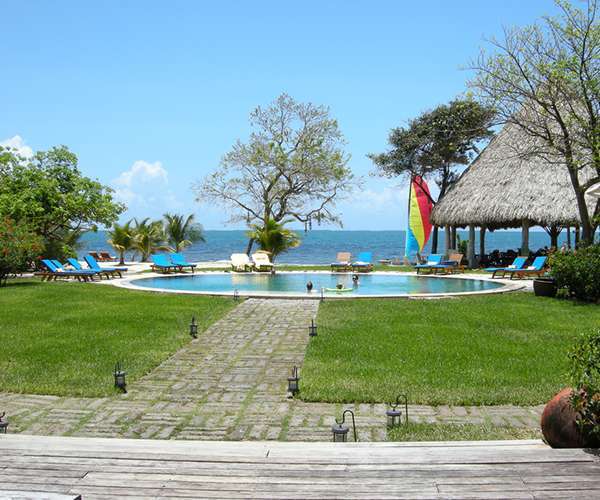

Nestled on the Belizean coast, overlooking the Caribbean Sea, escaping the mundane will be a breeze.
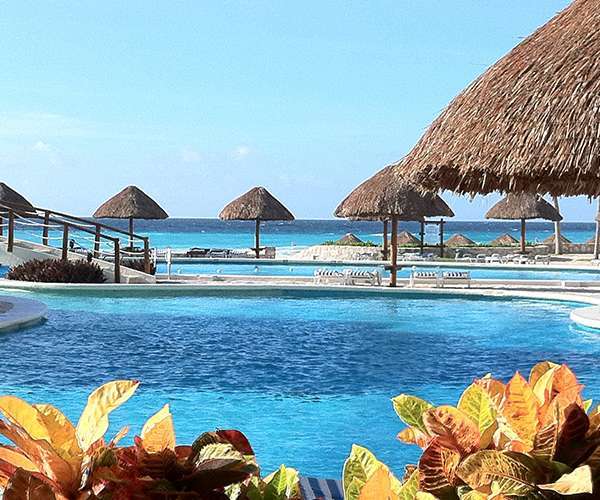

Set close enough to enjoy Cancun's downtown shopping, dining and nightlife, but far enough to escape the buzz, this hotel won't dissapoint.
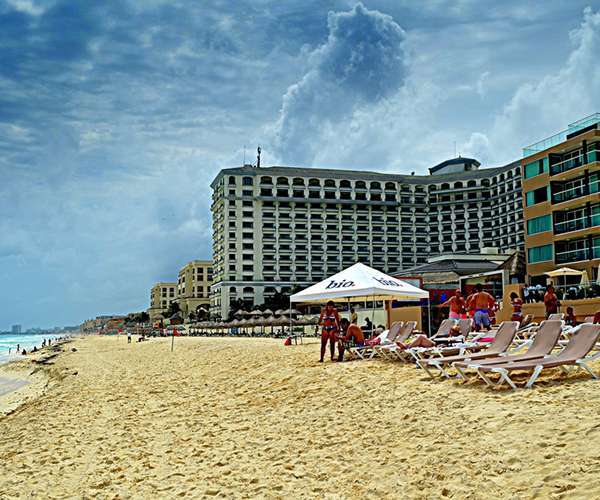

Looking to vacation like a rockstar? Think the Hard Rock brand would give travelers any other experience? Nope.
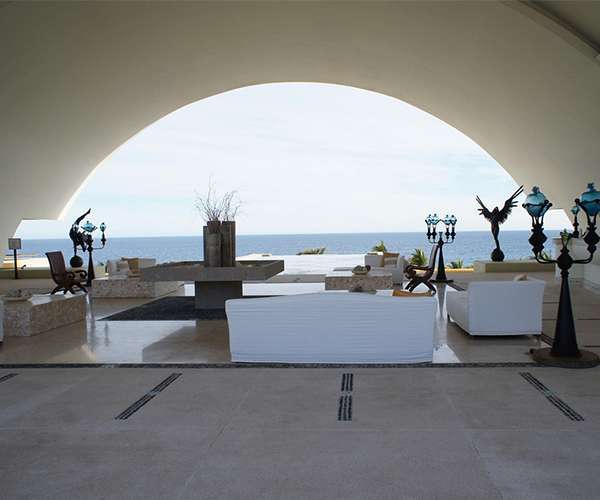

Luxurious, Spanish-styled architecture will leave travelers amazed, while relaxing in serene Cabo San Lucas.






